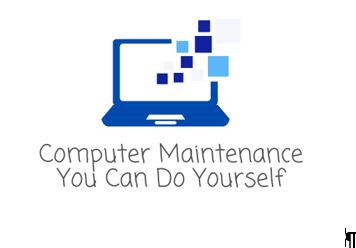By Gregg Allen
The Working Computer, LLC
twc.in.ct@gmail.com
Gregg Allen is a computer educator and owner of The Working Computer, LLC.
Embracing Nostalgia: What Makes a Computer Retro Instead of Obsolete?
In the fast-paced world of technology, it’s easy to dismiss older computers as relics of the past, condemned to the dustbin of obsolescence. But wait! Some machines are like fine wine – they age with grace, earning the endearing title of “retro.” So, what sets a computer apart as retro rather than just an outdated piece of silicon history? Well, buckle up for a journey through the corridors of time, complete with a sprinkle of geeky humor.
Firstly, a retro computer possesses a timeless charm that can make even the most stoic tech geek break into a nostalgic smile. These machines are the Don Drapers of the computing world, boasting classic design elements, distinctive form factors, and keyboards that go clickety-clunk, transporting users back to the good old days. Take the Commodore 64, for instance – the Brad Pitt of retro computing, with its iconic beige casing and a keyboard that’s practically a red carpet for your fingers. Well, almost…
Now, historical significance is the secret sauce that makes a computer retro rather than a museum piece. Retro computers aren’t just ancient artifacts; they’re the rockstars that paved the way for today’s sleek machines. Picture this: the Apple Macintosh strutting onto the tech scene in 1984 with its graphical user interface and mouse input, making every other computer look like it just stepped out of a black-and-white silent film. Sure, it may not have the processing power of a modern toaster, but who needs that when you can experience computing history like a VIP?
When deciding to buy “retro” gear, I ask myself the following questions: Was the computer model in question popular? Unique? Introduced features that changed personal computing? Did it appear in a movie or T.V. show? There’s also the question of if people are willing to trade in hundreds of their precious dollars to own a particular obsolete computer. As a computer brand or model fades away into obscurity the prices go from “retail”, “on sale”, “throw it away” to “I think I’ll keep it”, “horde it” and then the final step of, “Hey, I’ll sell it on eBay for the same price it sold for 20 years ago”.
Who makes the ultimate determination about “Retro or Not”? The retro computing community, of course! These folks are like the guardians of the digital galaxy, preserving, collecting, and sharing knowledge about vintage computers. It’s like a secret society, only with more pocket protectors. The Amiga 500, for example, has a fan club that rivals a Star Trek convention, with enthusiasts developing new software, modding hardware, and organizing events faster than you can say, “Beam me up, Scotty!”
In conclusion, embracing retro computing isn’t just a trip down memory lane; it’s a cosmic joyride through the universe of classic tech. So, dust off that old computer, fire up the clunky keyboard, and join the party – because in the world of retro, the fun never gets obsolete!



